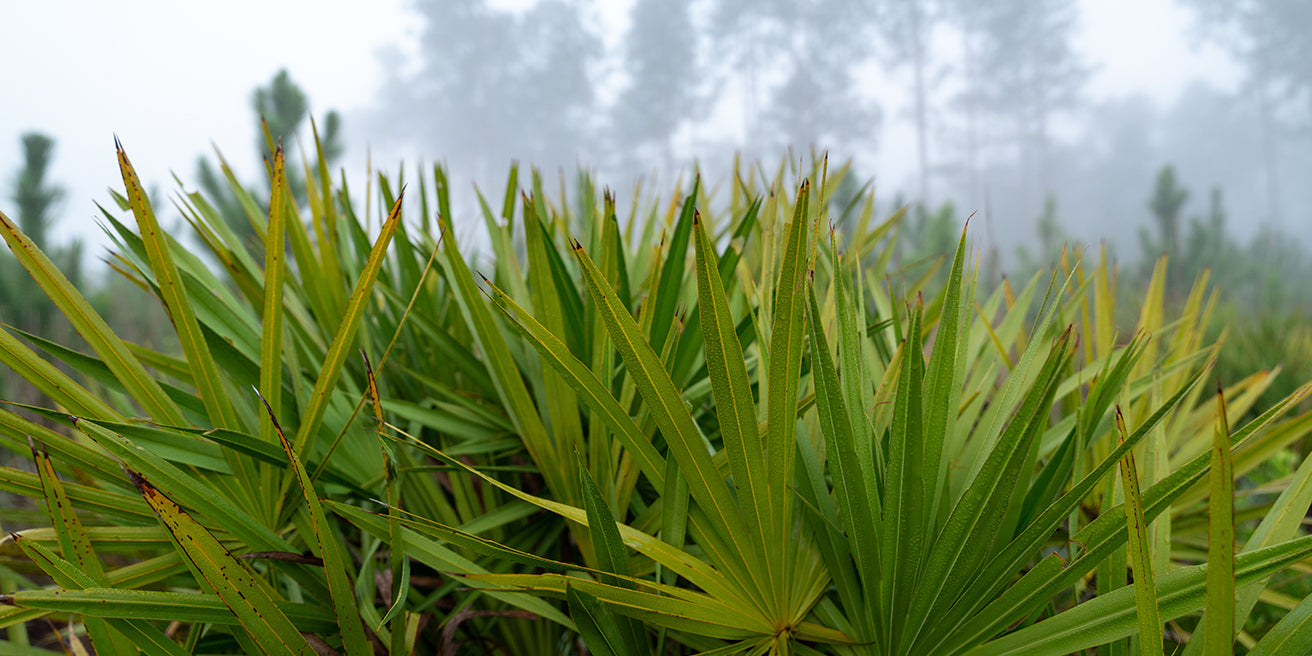
Saw Palmetto: A Natural Treasure
Saw palmetto (or Serenoa repens) is a special and unique dwarf palm tree that is indigenous to the southeastern United States. Scientists have estimated that some saw palmetto plants are thousands of years old. They thrive in wild pine forests and dunes, particularly in the state of Florida. The trees can grow up to 8 feet tall with “toothed” leaves resembling a saw, thus giving rise to the name “saw” palmetto.
Records show that mature saw palmetto berries, which are rich in fat, were originally used as a food source and medicinal solution by Native Americans dating back centuries. The first published reference of saw palmetto is based on stories of Quakers who were shipwrecked in 1696 and were provided berries as food by the native inhabitants.

Saw palmetto found its way into conventional medicine in the United States in the late 1800s. The first clinical reference was in letter to the American Journal of Pharmacy in April 1879 by Dr. J. B. Read. Dr. Read noted the history and botanical characteristics of the saw palmetto plant and berries, and provided comments on a number of medical/therapeutic uses for the berries. Eli Lilly and Company built a saw palmetto drying factory in Vero Beach, Florida in 1906 and marketed a saw palmetto berry liquid extract. The drying process removed the water, locked in the valuable oils of the berries, and allowed the berries to be stored for months, if not years.
By the mid-1900s, saw palmetto oil extract gained popularity in Europe, where it has been widely studied and used to support urinary and prostate health in men for over 60 years. Saw palmetto oil extract is recognized by the European Medicines Agency as an herbal medicinal product with recognized safety and effectiveness for urinary symptoms. It is estimated that almost 80% of the saw palmetto berries harvested in the US each year are shipped to Europe.
In the United States, saw palmetto is sold as a dietary supplement, where it is consistently a top-selling natural product. It is usually available in two forms: ground saw palmetto berry powder or saw palmetto berry oil extract. However, only high-quality, standardized saw palmetto oil extract at a dosage of 320 mg has been shown to support improved urinary function in clinical studies.
The scientific evidence for saw palmetto oil extract is mixed. In some cases, studies have shown the benefits to be no better than a placebo (sugar pill). However, in others, there is good evidence showing the benefits in lower urinary tract symptoms in men, such as reducing urinary frequency. A recent 2018 review of 27 scientific studies showed that 320 mg of standardized, high-quality saw palmetto extract reduces urinary frequency and improves urinary flow rates in aging men with lower urinary tract symptoms.
Clearly, the scientific evidence shows that not all saw palmetto extracts are equal. The variability in clinical studies appears to be driven, in part, by the variability of purity, potency, and dosing among commercially available saw palmetto oil extract products. As a dietary supplement, there is no FDA assurance of consistent quality and quantity of the key ingredients.
What men should look for in a saw palmetto dietary supplement
If you want to support healthy urinary and prostate function, saw palmetto oil extract may be a beneficial natural option. When choosing a brand, look for the following characteristics:
- Contains saw palmetto oil extract standardized to contain 85-95% fatty acids. The benefits of saw palmetto come from high-quality oils from mature berries. Only standardized, high-quality extracts have been shown to be effective. Look for this information on the ingredient label of your product when choosing a natural prostate supplement.
- Made in the USA. Saw palmetto is native to the southeastern United States, the only place in the world where it grows.
- Verified by an independent third party. Supplements are not regulated the same as drugs by the FDA. So be sure to look for brands that have been rigorously tested to ensure the purity, potency, and adherence to good manufacturing standards. Look for the verified mark from an organization like the United States Pharmacopeia (USP), a nonprofit, scientific organization with nearly 200 years of experience setting public standards for medicines and dietary supplements.
Nature can be a powerful driver of health and wellbeing. In this case, saw palmetto’s extensive historical and clinical background establishes it as a unique and very important natural treasure, one that can be harnessed to support your urinary and prostate health.






